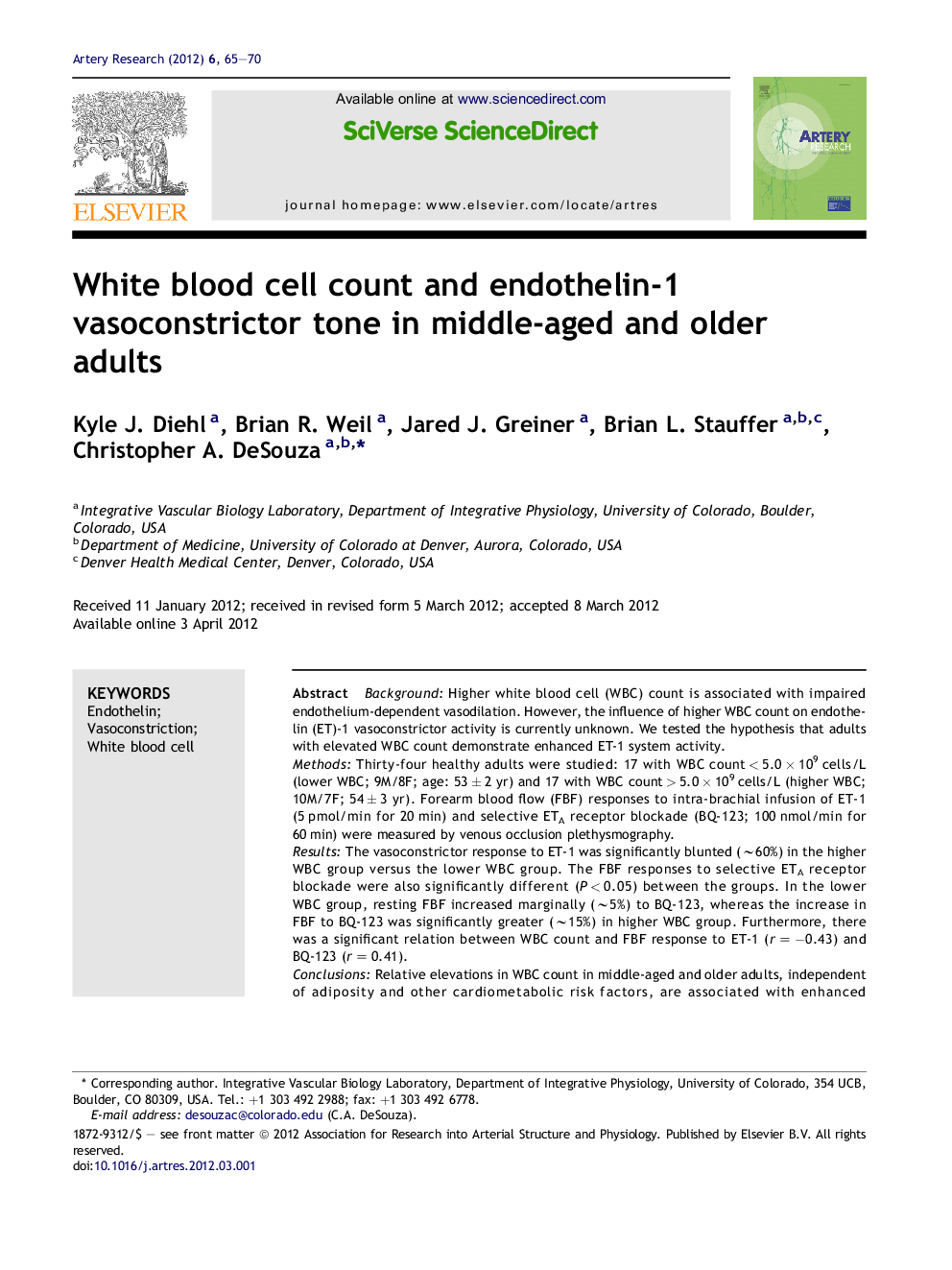| Article ID | Journal | Published Year | Pages | File Type |
|---|---|---|---|---|
| 2891921 | Artery Research | 2012 | 6 Pages |
BackgroundHigher white blood cell (WBC) count is associated with impaired endothelium-dependent vasodilation. However, the influence of higher WBC count on endothelin (ET)-1 vasoconstrictor activity is currently unknown. We tested the hypothesis that adults with elevated WBC count demonstrate enhanced ET-1 system activity.MethodsThirty-four healthy adults were studied: 17 with WBC count < 5.0 × 109 cells/L (lower WBC; 9M/8F; age: 53 ± 2 yr) and 17 with WBC count > 5.0 × 109 cells/L (higher WBC; 10M/7F; 54 ± 3 yr). Forearm blood flow (FBF) responses to intra-brachial infusion of ET-1 (5 pmol/min for 20 min) and selective ETA receptor blockade (BQ-123; 100 nmol/min for 60 min) were measured by venous occlusion plethysmography.ResultsThe vasoconstrictor response to ET-1 was significantly blunted (∼60%) in the higher WBC group versus the lower WBC group. The FBF responses to selective ETA receptor blockade were also significantly different (P < 0.05) between the groups. In the lower WBC group, resting FBF increased marginally (∼5%) to BQ-123, whereas the increase in FBF to BQ-123 was significantly greater (∼15%) in higher WBC group. Furthermore, there was a significant relation between WBC count and FBF response to ET-1 (r = −0.43) and BQ-123 (r = 0.41).ConclusionsRelative elevations in WBC count in middle-aged and older adults, independent of adiposity and other cardiometabolic risk factors, are associated with enhanced ET-1-mediated vasoconstrictor tone. Elevated ET-1 system activity may be a mechanism linking higher WBC count with increased cardiovascular risk.
